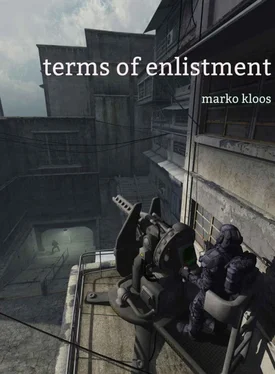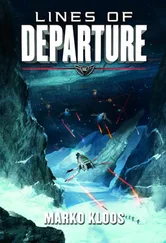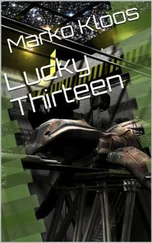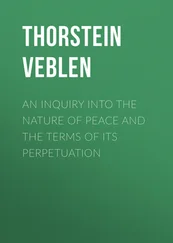“Plug in your helmet,” Halley says. “If we get a hull breach out there, you’ll want to be hooked up to the oxygen feed.”
I slip the flight helmet over my head and attach the hose coming from the mask to its receptacle on the side of the cockpit wall. The helmet is made for someone with a smaller head than mine, and the helmet liner squeezes my head uncomfortably. I connect the voice circuit and toggle the intercom channel.
“If there’s a Chinese destroyer out there, this will be a short flight,” I say.
“If there’s a Chinese destroyer out there, they would have boarded us already, or blown us into tiny little bits,” Halley answers without taking her gaze off her screens. “Besides, there’s precisely fuck-all we can do about that, unless you want to wait for the rescue ship on this busted tub.”
“No, thank you,” I say. “I’m not a huge fan of suffocation.”
The lateral movement of the docking clamp stops, and then the ship moves down into the drop hatch. We’re just a few moments from getting off this ship, and I hold my breath and pray to the entire Terran pantheon of deities for the ship’s power to stay on until we release from the docking clamp.
“Turning One,” Halley says as she reaches overhead and flips a succession of switches. Behind us, one of the drop ship’s engines comes to life with a loud and steady whine. When the engine has spooled up to Halley’s satisfaction, she moves her hand to a different bank of switches.
“Turning Two.”
The noise outside doubles as the second engine starts up. I feel a low vibration going through the hull.
“I feel like I’m taking my parents’ hydrocar for a joyride without permission,” Halley says. “Never had one of these to myself before.”
“Did we fill up enough to get us down?”
She checks a display with a few taps of her gloved finger, and shrugs.
“We’re half full. Enough to get us to the surface, and then some.”
Underneath us, the floor drops. The drop hatch is a huge airlock in the bottom of the hull. Normally, the ship would be oriented with its belly facing the surface of the planet below, but all I can see outside is the nothingness of space. Despite Halley’s assessment, I imagine a Chinese cruiser right next to the Versailles, point defense armament standing by to shred any escapees that manage to get clear of the hull.
The drop hatch finishes its downward-and-outward travel arc, leaving nothing between us and space but ten feet of drop through a hole in the ship’s armor plating.
“Here goes,” Halley says. “Dropping in three. Two. One. Drop .”
She thumbs a button on her throttle lever, and the Wasp drops out of the belly of the ship, sixty tons of spacecraft in freefall. I feel my stomach lurching upward sharply. Then we are clear of the hull, and the artificial gravity field of the Versailles, and the feeling of falling from a great height is replaced by a sudden weightlessness that pulls me out of my seat and against the straps of my harness. The floating feeling doesn’t last long. Halley guns the engines and whips the Wasp into a steep turn as soon as we’re out of the Versailles’ gravity field. She turns left, then right, and the countermeasures dispensers underneath the engine pods kick out a burst of decoy cartridges.
“I think we’re good,” she announces after a few moments of hard turns, and reverts to a less stomach-churning flight profile. She brings the Wasp around to get the Versailles into view.
“Holy fuck,” I say, and Halley merely exhales sharply into her helmet mike.
The Versailles looks like someone blasted her flank with a giant shotgun. Gray smoke is pouring from hundreds of holes in her outer hull. The planet below looks much closer than it should be for a proper orbit, and the battered frigate is drifting without propulsion, pointing nose-first at the green and brown planet surface below.
“I hope we were the last ones on there,” Halley says. “That thing’s going to come down in a million glowing pieces.”
We make a slow pass along the hull. The smooth and streamlined cigar shape of the ship is peppered with holes from bow to stern. Each hole is no bigger than a foot or two across.
“That wasn’t done by anti-ship ordnance,” Halley says. “What the hell kind of weapon makes holes like that?”
“Whatever it was, it did the job,” I reply. “I bet there’s not an airtight compartment left on this side of the hull.”
The Versailles is trailing debris on her aimless trajectory. There are bits of armor plating, frozen bubbles of leaked fluids, and random bits of junk from the compartments that were vented into space. As we make our way along the hull, Halley has to bob and weave to avoid hitting larger chunks of debris head-on. We see a few bodies, too—shipmates, asphyxiated and frozen in an instant, drifting away from the ship in head-over-heel tumbles. There are body parts as well—arms, legs, and heads, torn from the bodies of their owners either by the impact of whatever tore through the hull, or by the shock of the sudden decompression that ejected everything in the compartment into space in the fraction of a second. I recall that the berthing spaces for the enlisted Engineering crew are close to the outer starboard hull, and I wonder whether Halley and I would be floating out there as well if I had left the NNC on time at the end of my watch. Of all the possible ways to die, gasping for air in hard vacuum while being shock-frosted is one of the least pleasant ones I can imagine.
“Let’s see who else made it off this wreck,” Halley says. She toggles the comm channel over to the Navy emergency frequency.
“NACS Versailles personnel, this is Stinger Six-Two,” she says into her helmet mike. “Anyone listening in on shipboard or escape pod comms, please acknowledge.”
There’s only static in response. Halley repeats the broadcast twice, but there’s no reply, not even the click of a toggled “send” button.
“I’m going to get us clear of this hull, and closer to the planet,” she says, and pulls the Wasp into a roll. I look at the Versailles through the side window of the cockpit until the battered frigate disappears from view.
“Versailles personnel, this is Stinger Six-Two,” Halley transmits again when we are clear of the Versailles’ bulk. “Anyone copy down there?”
This time, there’s a garbled response on the emergency channel. Halley looks at me and exhales with emphasis.
“Thank goodness. I was starting to think we’re all alone out here,” she says to me.
“Versailles personnel, stand by. I’m going into a lower orbit to improve reception. Next transmission in five.”
We coast away from the Versailles, and toward the planet below. Under other circumstances, the ride would be a spectacular sight-seeing tour. There’s nothing between us and the blue-green planet but a few avionics consoles and an inch of armored glass. The planet spread out in front of us is a pristine world of clean oceans, snow-capped mountain ranges, and wild and empty continents. The NAC colony is the only human presence on Willoughby, twelve hundred colonists on a planet two-thirds the size of Terra.
As we dip into a lower orbit, Halley rolls the ship around its dorsal axis to give us a better view of the outside. She has a very light hand on the controls, and the Wasp follows her input like a powerful, well-trained animal. I remember how difficult it was for me to simply get the nose of the simulated drop ship pointing the right way in Basic, and Halley says that the real thing is about five times more difficult to fly than the simulator.
“Pretty, isn’t it?” she says to me, and I nod in response.
“Look at all that land down there, and it’s all unsettled,” Halley says. “We could set this ship down in the middle of one of those continents, and live on the supplies in the back for years. You’d get your wish early, about that patch of land on a colony planet.”
Читать дальше












